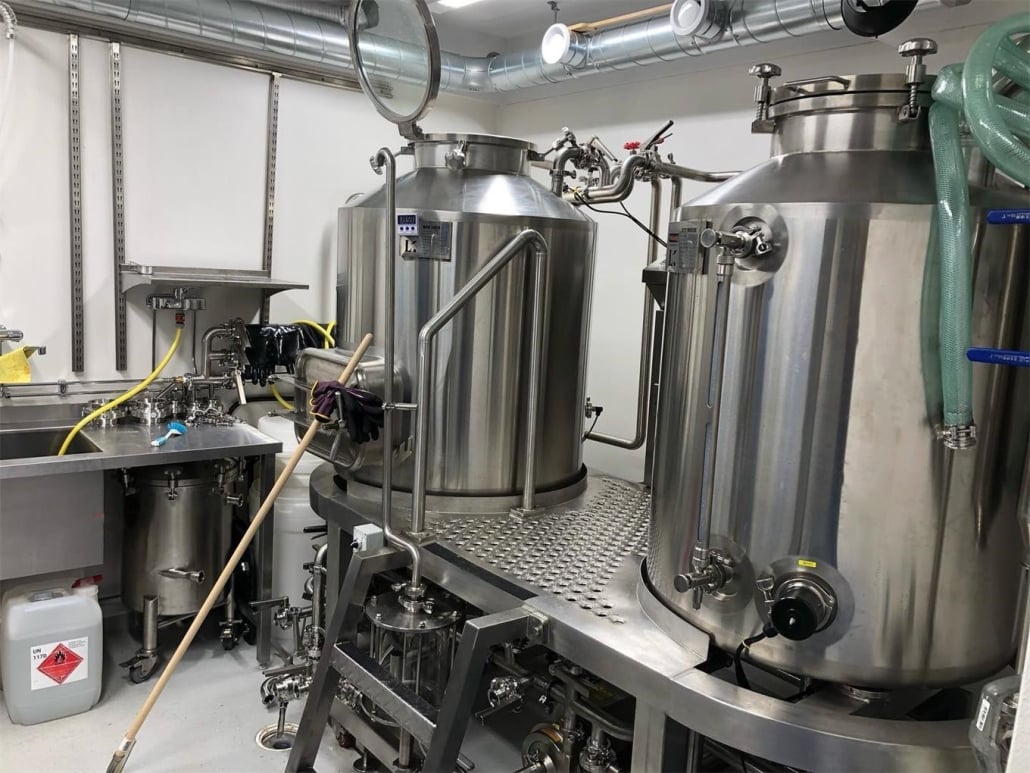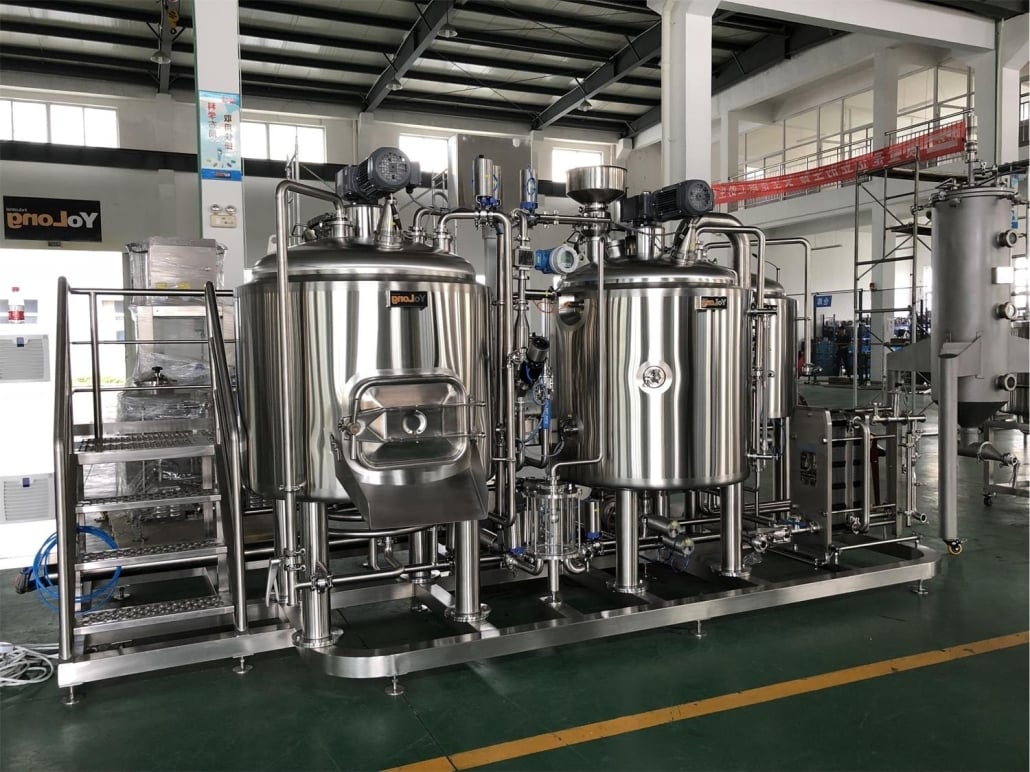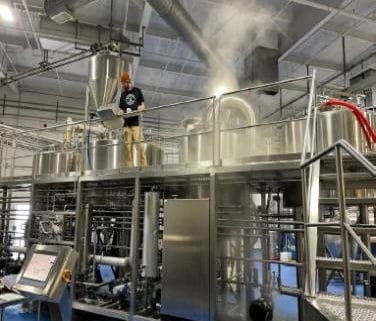Craft Brewing Equipment for Sale
Craft brewing is more than just a hobby. It’s a passion, an art, and for many, a business opportunity. If you’re looking to take your craft beer production to the next level, having the right equipment is crucial. But where do you start? Let’s walk through all the essentials you’ll need, from the brewing system to the fermenters, and even touch on installation and supplier comparisons. Whether you’re a home brewer expanding to commercial brewing or a startup launching a brewery, understanding your options for craft brewing equipment is key.
Overview of Craft Brewing Equipment for Sale
The world of craft brewing has exploded in recent years, with small-scale breweries springing up in cities and towns across the globe. To create quality craft beer, it’s essential to invest in equipment that meets your production needs while also allowing room for growth and customization.
There are different scales of craft brewing equipment available, ranging from home-brewing systems to full-fledged commercial setups. Depending on your ambitions and budget, the choices can vary greatly. Let’s explore the key components.

Craft Brewing Equipment Guide: What You Need
Craft brewing equipment can be divided into various categories based on the brewing process. From the brewing system to the fermenter and beyond, each piece plays an integral role in crafting the perfect beer.
1. Brewing System
The heart of any brewery, the brewing system is where the magic happens. It includes mash tuns, lauter tuns, and kettles where the brewing process begins. The scale of the system depends on the volume of beer you plan to produce.
2. Fermentation Equipment
After the wort is brewed, it must ferment. Fermenters come in various sizes and designs, from small-scale cylindrical fermenters to large conical fermenters. The material (usually stainless steel) and design can affect the brewing process significantly.
3. Cooling Systems
Maintaining temperature control during brewing is critical. Chillers and glycol systems ensure that your beer ferments at the correct temperature.
4. Filtration Equipment
Filtration systems help remove sediment and impurities from the beer before packaging, ensuring clarity and quality.
5. Packaging Equipment
From bottling to canning, the packaging stage requires specialized equipment depending on the scale of your operation.
Craft Brewing Equipment Types
| Equipment Type | Description | Purpose |
|---|---|---|
| Brewing System | Consists of mash tuns, lauter tuns, kettles, and hot liquor tanks. | Used to brew the wort, which is the foundation of beer, through a controlled heating and mashing process. |
| Fermenters | Tanks made from stainless steel or plastic, available in various shapes. | To allow wort to ferment and convert into beer by adding yeast. |
| Cooling Systems | Chillers and glycol systems that maintain temperature. | Essential for cooling wort after brewing and maintaining fermentation temperature. |
| Filtration Systems | Equipment for filtering beer. | To ensure the beer is clear and free of unwanted particles. |
| Packaging Equipment | Machinery for bottling or canning the final product. | Allows for easy packaging and distribution of the beer, ensuring consistent quality. |
| Cleaning Equipment | Systems for cleaning and sanitizing brewing vessels and lines. | Maintains hygiene and cleanliness to prevent contamination in future brewing cycles. |
The Brewing Process: Step-by-Step with Equipment
Brewing beer is a mix of art and science. Each step of the process requires precise control, and the right equipment helps ensure the best outcome. Let’s break down the process:
1. Mashing
In the mashing stage, the brewing system is used to mix water with malt to convert starches into fermentable sugars. Depending on the size of your system, you may have an automated or manual process for mashing.
2. Lautering
After mashing, the wort is separated from the spent grain in the lauter tun. Lautering is essential to get the best extract from the mash, which sets the quality of your beer.
3. Boiling
In this stage, the wort is boiled and hops are added for bitterness and flavor. The boil kettle is the main piece of equipment here, and it requires proper heat control to avoid scorching the wort.
4. Cooling
Once boiling is complete, the wort needs to be cooled quickly. Chillers or glycol systems help bring the wort down to fermentation temperature.
5. Fermentation
Fermenters are used to hold the cooled wort while yeast is added. The yeast will ferment the sugars into alcohol over a period of time.
6. Filtration
After fermentation, the beer is often filtered to remove any sediment. This step ensures that the final product is clear and has a smooth finish.
7. Packaging
Once the beer is ready, it’s transferred to bottles or cans using packaging equipment. Some setups also include kegging systems for commercial distribution.
Equipment Capacity, Space, Design, and Customization
| Equipment | Capacity | Space Requirements | Design & Layout | Customization Options |
|---|---|---|---|---|
| Brewing Systems | Ranges from 50L to 1000L systems | Varies based on size, often needs large space | Available in skid-mounted or modular layouts | Customizable mash tun and kettle sizes, heating types (gas, electric) |
| Fermenters | 5 BBL to 50 BBL options available | Requires vertical space in brewery | Conical fermenters are standard, varying in size | Customizable volume, temperature control jackets |
| Chillers | From small 1 HP to large 10 HP systems | Minimal floor space required | Compact designs for ease of installation | Customized cooling capacity, power options |
| Filtration Systems | Different sizes for batch or continuous use | Small footprint | Inline designs, adaptable for various setups | Can be tailored to specific filtration levels (micro, nano, macro) |
| Packaging Equipment | Capable of processing from 200 to 10,000 cans/bottles per hour | Large space for automated lines | Linear or rotary designs | Fully customizable for bottle, can, or keg types |
Craft Brewing Equipment Suppliers and Price Range
| Supplier | Products Offered | Price Range | Notable Features |
|---|---|---|---|
| BrewTech | Complete brewing systems and fermenters | $15,000 – $150,000 | Modular designs, high-quality stainless steel, scalability |
| Stout Tanks and Kettles | Brewing and fermentation equipment | $10,000 – $120,000 | Highly customizable systems, USA-made, excellent customer service |
| Ager Tank & Equipment | Used and new brewing equipment | $5,000 – $100,000 | Affordable used options, wide range of products available |
| Ss Brewtech | Small to mid-scale brewing systems | $3,000 – $75,000 | Known for innovation, user-friendly designs |
| PicoBrew | Homebrewing equipment and small systems | $500 – $10,000 | Compact systems for home brewers, automated features |
Installation, Operation, and Maintenance
| Equipment | Installation | Operation | Maintenance |
|---|---|---|---|
| Brewing System | Requires professional installation and plumbing | Involves mashing, lautering, boiling | Regular cleaning and sanitation required, replace worn-out parts |
| Fermenters | Can be installed by brewers, minimal plumbing | Simple to use once connected to chillers | Clean after each batch, check for leaks |
| Chillers | Needs specialized setup for glycol systems | Automatic temperature control during fermentation | Annual service to ensure efficient operation |
| Filtration Equipment | Easily integrated into brewery systems | Manual or automatic operation depending on model | Periodic cleaning, filter replacement required |
| Packaging Equipment | Extensive setup for automated systems | Automated filling, sealing, and labeling | Regular lubrication and maintenance for moving parts |
How to Choose the Right Supplier for Craft Brewing Equipment
Choosing a supplier for your brewing equipment can feel overwhelming with so many options. It’s essential to consider factors such as product quality, customer support, and the ability to customize equipment to your needs. Here’s a quick guide to help you make an informed decision:
| Factor | Why It Matters | What to Look For |
|---|---|---|
| Quality of Equipment | Craft brewing equipment is a significant investment, and you want it to last for years. | Stainless steel construction, positive reviews, industry certifications. |
| Customization Options | Depending on your brewing goals, you may need specific customizations. | Look for suppliers offering customizable systems to fit your brewing setup and process. |
| Customer Service | If you encounter issues with your equipment, responsive customer service is a must. | Check for after-sales support, warranties, and service contracts. |
| Price Range | While you don’t want to cut corners, it’s important to stay within budget. | Compare prices and request quotes from multiple suppliers. Balance cost with the quality and support offered. |
| Installation Support | Installing brewing equipment can be a complicated task. | Choose suppliers who offer installation services or detailed support for DIY installation. |
Comparing Pros and Cons of Craft Brewing Equipment
| Equipment Type | Pros | Cons |
|---|---|---|
| Brewing Systems | Scalable, customizable, essential for high-quality beer | Expensive, requires professional installation |
| Fermenters | Available in many sizes, stainless steel is easy to clean | Large fermenters require significant space |
| Cooling Systems | Precise temperature control, essential for quality fermentation | Complex setup, can be costly |
| Filtration Equipment | Ensures beer clarity and quality | Requires regular cleaning and filter replacement |
| Packaging Equipment | Automates bottling/canning process, scalable | High upfront cost, takes up space |

FAQ
| Question | Answer |
|---|---|
| What size brewing system do I need? | It depends on your production goals. For home brewing, a small 50L system may be sufficient, but for commercial brewing, a 5-30 BBL system is typical. |
| How much space do I need for a brewery? | Space requirements vary based on equipment size, but you’ll need at least 500-2000 square feet for a small commercial brewery. |
| How do I clean brewing equipment? | Regular cleaning is essential. Use brewery-specific cleaning solutions and ensure all tanks and lines are sanitized after each batch. |
| How long does the brewing process take? | It varies by beer type, but a typical brewing cycle takes 1-2 weeks, including fermentation. |
| Can I start with used brewing equipment? | Yes, many breweries start with used equipment to save on costs. Just ensure it’s in good working condition and can be properly sanitized. |
Conclusion
Investing in craft brewing equipment is a significant step for any brewer, whether you’re brewing at home or starting a full-scale commercial brewery. By understanding the types of equipment, their costs, and their functionality, you’ll be well-prepared to make informed decisions. Keep in mind that each brewery is unique, so tailor your equipment choices to your brewing style, production goals, and space requirements.













